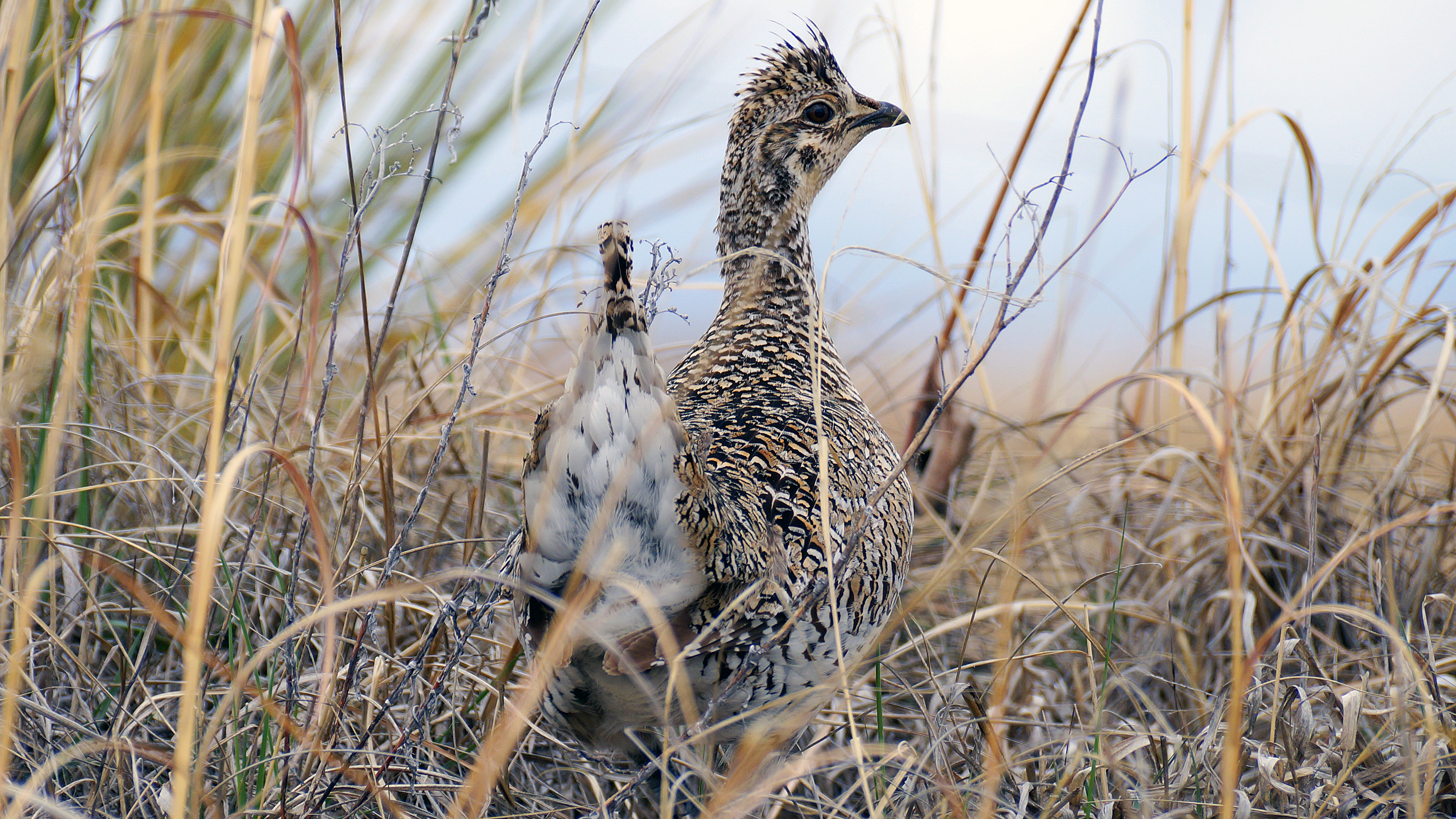
Researchers at the University of Nebraska-Lincoln are asking whether predicted increased temperatures across the Great Plains will influence the survival of the native, game bird species, the Sharp-tailed grouse. In a first such study examining current and expected temperature effects on the species’ ecology and population health, the answer appears to be: Yes, it’s likely.
“Our study carried out in Sandhills rangeland of Western Nebraska provides a baseline for understanding Sharp-tailed grouse thermal ecology,” said E.J. Raynor, lead researcher on the project recently published in a scientific journal, PLOS ONE. “Our findings suggest Sharp-tailed grouse selected nest sites that reduced their exposure to high temperatures during the hottest part of the day.”
Those nests experienced 88°F temperatures for at least an hour less than nearby available sites in the same pasture, Raynor said, noting that 88 degrees is the threshold where Sharp-tailed grouse experience heat stress and pant to cool their bodies.
Past research on Sharp-tailed grouse found the birds preferred small shrubs and yucca plants as nesting locations. This study showed that availability of these fine-scale vegetative habitats within grasslands is important because they regulate nest temperature more than other vegetation in the study area.
For the study, Raynor; Larkin Powell, of the School of Natural Resources; and Walt Schacht, of the Department of Agronomy and Horticulture; all at Nebraska, measured temperatures of grouse nests and nearby available spaces conducive for nesting in the Valentine area of the Nebraska Sandhills. They also documented the vegetation characteristics of the sites. Temperature measurements were then compared to future projections of air temperature under different emission scenarios for the year 2080.
Based on those projections, in 2080, grouse will face nest temperatures of 93°F for five hours per day if greenhouse gas emissions are low and seven hours per day if they are high. Previous research in the southern Great Plains has shown that daily nest survival rates are reduced by about 10 percent for every half-hour the temperature remains above 93°F in the similar-sized Lesser Prairie-Chicken, Raynor said.
“Available locations on the Sandhills landscape would be over 93°F for six and nine hours of the day depending on future low and high emission scenario predictions,” he said, “indicating thermal space not only at the nest will be more limited in the future.”
The Nebraska Sandhills, where the grassland is intact, provides more appropriate nesting site options than other Great Plains grasslands, where higher grazing rates occur, and future climate conditions could further restrict the availability of nesting sites that meet the heat-stress temperature threshold. To survive, the Sharp-tailed grouse’s nesting behavior may need to change.
The researchers didn’t notice a substantial difference in temperatures of nests that failed or hatched, indicating that predators may play a role in the grouse’s nest fate. The researchers noted predation risk relative to thermal properties of nests was not thoroughly evaluated in the study and should be examined in future ones. They also called for further studies investigating the role of grassland temperatures and predators on nest placement and nest success.
“Our work shows that grouse have many options on where to place their nest,” Raynor said, “but placing it in a cooler location can reduce the birds’ exposure to temperatures that cause heat stress. This behavior will likely become even more important as temperatures climb under future climate predictions.”
Access the study.
Shawna Richter-Ryerson, Natural Resources. E.J. Raynor contributed to this report.
More details at: https://go.unl.edu/w3bo